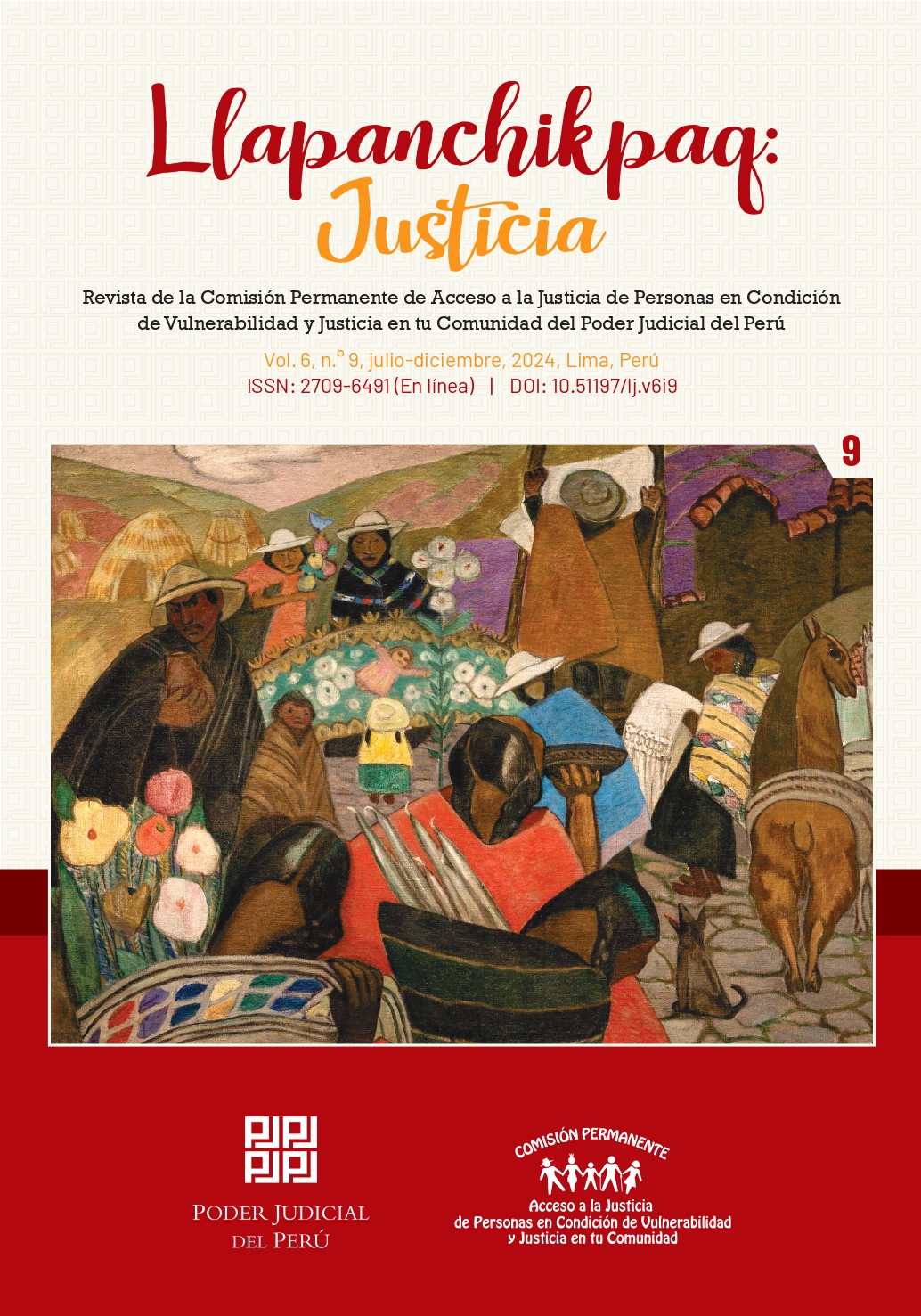The Crime of Feminicide: Violence against Women for Gender Reasons
Abstract
The work analyzes the international instruments that recognize the human rights of women and how the States parties have adopted special temporary measures aimed at achieving substantive equality between women and men. In the case of the Peruvian State, it provides an account of the legal reception of its responsibilities assumed as a State Party regarding the recognition and protection of women's human rights, and how Peruvian jurisprudence interprets and applies them. The legislative background of the law that incorporated the criminal offense of feminicide will be analyzed, as well as the reasons that justify this regulatory change. Likewise, the current problem regarding the objective typicality in these cases is developed, given the discrepancies in criteria regarding the analysis of the active and passive subject of the crime of feminicide. Finally, the conclusions of the research are formulated.
Downloads
Metrics
References
Acuerdo Plenario n.o 01-2016/CIJ-116 (2016). Alcances del delito de Feminicidio. Corte Suprema de Justicia de la República.
Acuerdo Plenario n.o 09-2019-CIJ/116 (2019). Violencia familia contra las mujeres e integrantes del grupo familiar. Principio de oportunidad, acuerdo reparatorio y problemática de su punición. Corte Suprema de Justicia de la República.
Casación 458-2020-Huancavelica (2022).Corte Suprema de Justicia de la República.
Caso González y otras vs. México (2009). Corte Interamericana de Derechos Humanos (CIDH) (16 de noviembre de 2009). https://corteidh.or.cr/ver_ficha_tecnica.cfm?nId_Ficha=347&lang=es
Caso Vicky Hernández y otras vs. Honduras (2021). Corte Interamericana de Derechos Humanos (CIDH) (26 de marzo 2021). https://www.corteidh.or.cr/docs/casos/articulos/seriec422esp.pdf
Comisión de Justicia de Género del Poder Judicial. (2018). Manual para el dictado de medidas de protección en el Marco de la Ley n.o 30364.
Comisión de Justicia de Género del Poder Judicial. (2021). El feminicidio matar a una mujer por su condición de tal. Boletín jurídico 1, Poder Judicial.
Comité para la Eliminación de la Discriminación contra la Mujer (CEDAW) (1992). Recomendación n.o 19.
Comité para la Eliminación de la Discriminación contra la Mujer (CEDAW) (2004). Recomendación n. o 25.
Comité para la Eliminación de la Discriminación contra la Mujer (CEDAW) (2010). Recomendación n. o 28.
Comité para la Eliminación de la Discriminación contra la Mujer (CEDAW) (2015). Recomendación n. o 33.
Comité para la Eliminación de la Discriminación contra la Mujer (CEDAW) (2017). Recomendación n. o 35.
Congreso de la República (2012a). Proyecto de Ley n.o 1616/2012. Congreso de la República (2012b) Proyecto de Ley n.o 20307/2012.
Convención sobre la eliminación de todas las formas de discriminación contra la mujer (CEDAW). (1979).
Convención interamericana para prevenir, sancionar y erradicar la violencia contra la mujer. (1994). Convención Belém do Para.
Ley n.° 30364. Ley para prevenir, sancionar y erradicar la violencia contra las mujeres y los integrantes del grupo familiar, 2015.
Opinión Consultiva OC-24/17. Identidad de género, e igualdad y no discriminación a parejas del mismo sexo. Corte Interamericana de Derechos Humanos.
Organización de las Naciones Unidas Mujeres México (s/f). La igualdad de género. https://www.legisver.gob.mx/equidadNotas/ publicacionLXIII/Igualdad%20de%20Genero.pdf
Recurso de Nulidad n.o 453-2019 – PJ. Lima Norte. Corte Suprema de Justicia de la República.
Sentencia del Tribunal Constitucional (Perú) [STC]. Exp. n.o 05652-2007-PA/TC (2008).
Sentencia del Tribunal Constitucional (Perú) [STC]. Exp. n.o 3378-2019-PA/TC (2020).
Copyright (c) 2024 Sofia Rivas La Madrid

This work is licensed under a Creative Commons Attribution 4.0 International License.
The authors retain their copyrights and register under the Creative Commons Attribution 4.0 International License (CC BY 4.0), which allows the use of the published material (adapt - remix, transform and build - and share - copy and redistribute - the material in any medium or format).
a. The journal allows authors to retain their copyright of submitted articles without any restrictions.
b. Authors retain the right to share, distribute, copy, perform and publicly communicate the article published in Llapanchipaq Justicia (e.g., place it in an institutional repository).
c. Authors retain the right to make a subsequent publication of their work, to use the article or any part of it (for example: a compilation of their work, notes for conferences, thesis, or for a book), as long as they indicate the source of publication (authors of the work, journal, volume, number and date).
















